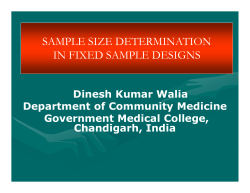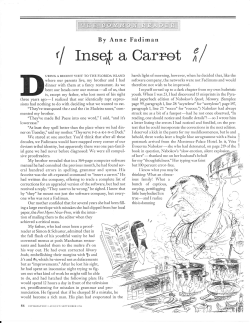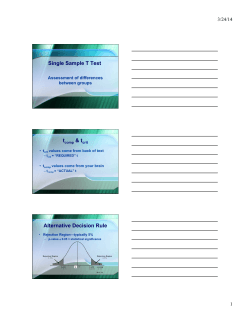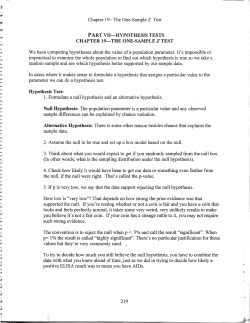
Package 'RUVnormalize'
Package ‘RUVnormalize’
January 20, 2015
Title RUV for normalization of expression array data
Version 1.0.0
Date 2013-11-10
Author Laurent Jacob
Maintainer Laurent Jacob <laurent.jacob@univ-lyon1.fr>
Description RUVnormalize is meant to remove unwanted variation from
gene expression data when the factor of interest is not
defined, e.g., to clean up a dataset for general use or to do
any kind of unsupervised analysis.
License GPL-3
LazyLoad yes
Imports RUVnormalizeData, Biobase
Suggests
Enhances spams
Depends R (>= 2.10.0)
NeedsCompilation no
biocViews StatisticalMethod, Normalization
BuildVignettes true
R topics documented:
clScore . . . . . .
iterativeRUV . . .
naiveRandRUV . .
naiveReplicateRUV
svdPlot . . . . . .
.
.
.
.
.
.
.
.
.
.
.
.
.
.
.
.
.
.
.
.
.
.
.
.
.
.
.
.
.
.
.
.
.
.
.
.
.
.
.
.
.
.
.
.
.
.
.
.
.
.
.
.
.
.
.
.
.
.
.
.
Index
.
.
.
.
.
.
.
.
.
.
.
.
.
.
.
.
.
.
.
.
.
.
.
.
.
.
.
.
.
.
.
.
.
.
.
.
.
.
.
.
.
.
.
.
.
.
.
.
.
.
.
.
.
.
.
.
.
.
.
.
.
.
.
.
.
.
.
.
.
.
.
.
.
.
.
.
.
.
.
.
.
.
.
.
.
.
.
.
.
.
.
.
.
.
.
.
.
.
.
.
.
.
.
.
.
.
.
.
.
.
.
.
.
.
.
.
.
.
.
.
. 2
. 4
. 8
. 11
. 14
18
1
2
clScore
Computes a distance between two partitions of the same data
clScore
Description
The function takes as input two partitions of a dataset into clusters, and returns a number which is
small if the two partitions are close, large otherwise.
Usage
clScore(c1, c2)
Arguments
c1
A vector giving the assignment of the samples to cluster for the first partition
c2
A vector giving the assignment of the samples to cluster for the second partition
Value
A number corresponding to the distance between c1 and c2
Examples
if(require(RUVnormalizeData)){
## Load the data
data(gender, package=RUVnormalizeData)
Y <X <X <X <chip
t(exprs(gender))
as.numeric(phenoData(gender)$gender == M)
X - mean(X)
cbind(X/(sqrt(sum(X^2))))
<- annotation(gender)
## Extract regions and labs for plotting purposes
lregions <- sapply(rownames(Y),FUN=function(s) strsplit(s,_)[[1]][2])
llabs <- sapply(rownames(Y),FUN=function(s) strsplit(s,_)[[1]][3])
## Dimension of the factors
m <- nrow(Y)
n <- ncol(Y)
p <- ncol(X)
Y <- scale(Y, scale=FALSE) # Center gene expressions
cIdx <- which(featureData(gender)$isNegativeControl) # Negative control genes
## Prepare plots
annot <- cbind(as.character(sign(X)))
clScore
3
colnames(annot) <- gender
plAnnots <- list(gender=categorical)
lab.and.region <- apply(rbind(lregions, llabs),2,FUN=function(v) paste(v,collapse=_))
gender.col <- c(-1 = "deeppink3", 1 = "blue")
## Remove platform effect by centering.
Y[chip==hgu95a.db,] <- scale(Y[chip==hgu95a.db,], scale=FALSE)
Y[chip==hgu95av2.db,] <- scale(Y[chip==hgu95av2.db,], scale=FALSE)
## Number of genes kept for clustering, based on their variance
nKeep <- 1260
##-------------------------## Naive RUV-2 no shrinkage
##-------------------------k <- 20
nu <- 0
## Correction
nsY <- naiveRandRUV(Y, cIdx, nuCoeff=0, k=k)
## Clustering of the corrected data
sdY <- apply(nsY, 2, sd)
ssd <- sort(sdY,decreasing=TRUE,index.return=TRUE)$ix
kmres2ns <- kmeans(nsY[,ssd[1:nKeep],drop=FALSE],centers=2,nstart=200)
vclust2ns <- kmres2ns$cluster
nsScore <- clScore(vclust2ns, X)
## Plot of the corrected data
svdRes2ns <- NULL
svdRes2ns <- svdPlot(nsY[, ssd[1:nKeep], drop=FALSE],
annot=annot,
labels=lab.and.region,
svdRes=svdRes2ns,
plAnnots=plAnnots,
kColors=gender.col, file=NULL)
##-------------------------## Naive RUV-2 + shrinkage
##-------------------------k <- m
nu.coeff <- 1e-3
## Correction
nY <- naiveRandRUV(Y, cIdx, nuCoeff=nu.coeff, k=k)
## Clustering of the corrected data
sdY <- apply(nY, 2, sd)
ssd <- sort(sdY,decreasing=TRUE,index.return=TRUE)$ix
kmres2 <- kmeans(nY[,ssd[1:nKeep],drop=FALSE],centers=2,nstart=200)
4
iterativeRUV
vclust2 <- kmres2$cluster
nScore <- clScore(vclust2,X)
## Plot of the corrected data
svdRes2 <- NULL
svdRes2 <- svdPlot(nY[, ssd[1:nKeep], drop=FALSE],
annot=annot,
labels=lab.and.region,
svdRes=svdRes2,
plAnnots=plAnnots,
kColors=gender.col, file=NULL)
}
iterativeRUV
Remove unwanted variation from a gene expression matrix using control genes, optionally replicate samples, and iterative estimates of the
factor of interest
Description
The function takes as input a gene expression matrix as well as the index of negative control genes
and replicate samples. It estimates and remove unwanted variation from the gene expression. The
major difference with naiveRandRUV and naiveReplicateRUV is that iterativeRUV jointly estimates the factor of interest and the unwanted variation term. It does so iteratively, by estimating
each term using the current estimate of the other one.
Usage
iterativeRUV(Y, cIdx, scIdx=NULL, paramXb, k, nu.coeff=0, cEps=1e-08, maxIter=30,
Wmethod="svd", Winit=NULL, wUpdate=maxIter + 1)
Arguments
Y
Expression matrix where the rows are the samples and the columns are the
genes.
cIdx
Column index of the negative control genes in Y, for estimation of unwanted
variation.
scIdx
Matrix giving the set of replicates. Each row is a set of arrays corresponding to
replicates of the same sample. The number of columns is the size of the largest
set of replicates, and the smaller sets are padded with -1 values. For example if
the sets of replicates are (1,11,21), (2,3), (4,5), (6,7,8), the scIdx should be 1 11
21 2 3 -1 4 5 -1 6 7 8
paramXb
A list containing parameters for the estimation of the term of interest: K corresponds to the rank of X. lambda is the regularization parameter. Large values of
lambda lead to sparser, more shrunk estimates of beta. D, batch, iter and mode
should not be modified unless you are familiar with sparse dictionary learning
algorithms.
iterativeRUV
5
k
Desired rank for the estimated unwanted variation term. The returned rank may
be lower if the replicate arrays and control genes did not contain a signal of rank
k.
nu.coeff
Regularization parameter for the unwanted variation.
cEps
tolerance for relative changes of Wa and Xb estimators at each step. When both
get smaller than cEps, the iterations stop.
maxIter
Maximum number of iterations.
Wmethod
’svd’ or ’rep’, depending whether W is estimated from control genes or replicate
samples.
Winit
Optionally provides an initial value for W.
wUpdate
Number of iterations between two updates of W. By default, W is never updated.
Make sure that enough iterations are done after the last update of W. E.g, setting
W to maxIter will only allow for one iteration of estimating alpha given (Xb, W)
and no re-estimation of Xb.
Value
A list containing the following terms:
X, b
if p is not NULL, contains an estimate of the factor of interest (X) and its effect
(beta) obtained using rank-p restriction of the SVD of Y - W alpha.
W, a
Estimates of the unwanted variation factors (W) and their effect (alpha).
cY
The corrected expression matrix Y - W alpha.
Examples
if(require(RUVnormalizeData) && require(spams)){
## Load the spams library
library(spams)
## Load the data
data(gender, package=RUVnormalizeData)
Y <X <X <X <chip
t(exprs(gender))
as.numeric(phenoData(gender)$gender == M)
X - mean(X)
cbind(X/(sqrt(sum(X^2))))
<- annotation(gender)
## Extract regions and labs for plotting purposes
lregions <- sapply(rownames(Y),FUN=function(s) strsplit(s,_)[[1]][2])
llabs <- sapply(rownames(Y),FUN=function(s) strsplit(s,_)[[1]][3])
## Dimension of the factors
m <- nrow(Y)
n <- ncol(Y)
p <- ncol(X)
Y <- scale(Y, scale=FALSE) # Center gene expressions
6
iterativeRUV
cIdx <- which(featureData(gender)$isNegativeControl) # Negative control genes
## Prepare plots
annot <- cbind(as.character(sign(X)))
colnames(annot) <- gender
plAnnots <- list(gender=categorical)
lab.and.region <- apply(rbind(lregions, llabs),2,FUN=function(v) paste(v,collapse=_))
gender.col <- c(-1 = "deeppink3", 1 = "blue")
## Remove platform effect by centering.
Y[chip==hgu95a.db,] <- scale(Y[chip==hgu95a.db,], scale=FALSE)
Y[chip==hgu95av2.db,] <- scale(Y[chip==hgu95av2.db,], scale=FALSE)
## Number of genes kept for clustering, based on their variance
nKeep <- 1260
## Prepare control samples
scIdx <- matrix(-1,84,3)
rny <- rownames(Y)
added <- c()
c <- 0
# Replicates by lab
for(r in 1:(length(rny) - 1)){
if(r %in% added)
next
c <- c+1
scIdx[c,1] <- r
cc <- 2
for(rr in seq(along=rny[(r+1):length(rny)])){
if(all(strsplit(rny[r],_)[[1]][-3] == strsplit(rny[r+rr],_)[[1]][-3])){
scIdx[c,cc] <- r+rr
cc <- cc+1
added <- c(added,r+rr)
}
}
}
scIdxLab <- scIdx
scIdx <- matrix(-1,84,3)
rny <- rownames(Y)
added <- c()
c <- 0
## Replicates by region
for(r in 1:(length(rny) - 1)){
if(r %in% added)
next
c <- c+1
scIdx[c,1] <- r
iterativeRUV
7
cc <- 2
for(rr in seq(along=rny[(r+1):length(rny)])){
if(all(strsplit(rny[r],_)[[1]][-2] == strsplit(rny[r+rr],_)[[1]][-2])){
scIdx[c,cc] <- r+rr
cc <- cc+1
added <- c(added,r+rr)
}
}
}
scIdx <- rbind(scIdxLab,scIdx)
## Number of genes kept for clustering, based on their variance
nKeep <- 1260
## Prepare plots
annot <- cbind(as.character(sign(X)))
colnames(annot) <- gender
plAnnots <- list(gender=categorical)
lab.and.region <- apply(rbind(lregions, llabs),2,FUN=function(v) paste(v,collapse=_))
gender.col <- c(-1 = "deeppink3", 1 = "blue")
##--------------------------## Iterative replicate-based
##--------------------------cEps <- 1e-6
maxIter <- 30
p <- 20
paramXb <- list()
paramXb$K <- p
paramXb$D <- matrix(c(0.),nrow = 0,ncol=0)
paramXb$batch <- TRUE
paramXb$iter <- 1
paramXb$mode <- PENALTY
paramXb$lambda <- 0.25
## Correction
iRes <- iterativeRUV(Y, cIdx, scIdx, paramXb, k=20, nu.coeff=0,
cEps, maxIter,
Wmethod=rep, wUpdate=11)
ucY <- iRes$cY
## Cluster the corrected data
sdY <- apply(ucY, 2, sd)
ssd <- sort(sdY,decreasing=TRUE,index.return=TRUE)$ix
kmresIter <- kmeans(ucY[,ssd[1:nKeep]],centers=2,nstart=200)
vclustIter <- kmresIter$cluster
IterScore <- clScore(vclustIter,X)
## Plot the corrected data
svdResIter <- NULL
8
naiveRandRUV
svdResIter <- svdPlot(ucY[, ssd[1:nKeep], drop=FALSE],
annot=annot,
labels=lab.and.region,
svdRes=svdResIter,
plAnnots=plAnnots,
kColors=gender.col, file=NULL)
##-------------------------## Iterated ridge
##-------------------------paramXb <- list()
paramXb$K <- p
paramXb$D <- matrix(c(0.),nrow = 0,ncol=0)
paramXb$batch <- TRUE
paramXb$iter <- 1
paramXb$mode <- PENALTY #2
paramXb$lambda <- 1
paramXb$lambda2 <- 0
## Correction
iRes <- iterativeRUV(Y, cIdx, scIdx=NULL, paramXb, k=nrow(Y), nu.coeff=1e-2/2,
cEps, maxIter,
Wmethod=svd, wUpdate=11)
nrcY <- iRes$cY
## Cluster the corrected data
sdY <- apply(nrcY, 2, sd)
ssd <- sort(sdY,decreasing=TRUE,index.return=TRUE)$ix
kmresIter <- kmeans(nrcY[,ssd[1:nKeep]],centers=2,nstart=200)
vclustIter <- kmresIter$cluster
IterRandScore <- clScore(vclustIter,X)
## Plot the corrected data
svdResIterRand <- NULL
svdResIterRand <- svdPlot(nrcY[, ssd[1:nKeep], drop=FALSE],
annot=annot,
labels=lab.and.region,
svdRes=svdResIterRand,
plAnnots=plAnnots,
kColors=gender.col, file=NULL)
}
naiveRandRUV
Remove unwanted variation from a gene expression matrix using negative control genes
naiveRandRUV
9
Description
The function takes as input a gene expression matrix as well as the index of negative control genes.
It estimates unwanted variation from these control genes, and removes them by regression, using
ridge and/or rank regularization.
Usage
naiveRandRUV(Y, cIdx, nuCoeff=0.001, k=nrow(Y))
Arguments
Y
Expression matrix where the rows are the samples and the columns are the
genes.
cIdx
Column index of the negative control genes in Y, for estimation of unwanted
variation.
nuCoeff
Regularization parameter for the unwanted variation.
k
Desired rank for the estimated unwanted variation term.
Value
A matrix corresponding to the gene expression after substraction of the estimated unwanted variation term.
Examples
if(require(RUVnormalizeData)){
## Load the data
data(gender, package=RUVnormalizeData)
Y <X <X <X <chip
t(exprs(gender))
as.numeric(phenoData(gender)$gender == M)
X - mean(X)
cbind(X/(sqrt(sum(X^2))))
<- annotation(gender)
## Extract regions and labs for plotting purposes
lregions <- sapply(rownames(Y),FUN=function(s) strsplit(s,_)[[1]][2])
llabs <- sapply(rownames(Y),FUN=function(s) strsplit(s,_)[[1]][3])
## Dimension of the factors
m <- nrow(Y)
n <- ncol(Y)
p <- ncol(X)
Y <- scale(Y, scale=FALSE) # Center gene expressions
cIdx <- which(featureData(gender)$isNegativeControl) # Negative control genes
## Prepare plots
10
naiveRandRUV
annot <- cbind(as.character(sign(X)))
colnames(annot) <- gender
plAnnots <- list(gender=categorical)
lab.and.region <- apply(rbind(lregions, llabs),2,FUN=function(v) paste(v,collapse=_))
gender.col <- c(-1 = "deeppink3", 1 = "blue")
## Remove platform effect by centering.
Y[chip==hgu95a.db,] <- scale(Y[chip==hgu95a.db,], scale=FALSE)
Y[chip==hgu95av2.db,] <- scale(Y[chip==hgu95av2.db,], scale=FALSE)
## Number of genes kept for clustering, based on their variance
nKeep <- 1260
##-------------------------## Naive RUV-2 no shrinkage
##-------------------------k <- 20
nu <- 0
## Correction
nsY <- naiveRandRUV(Y, cIdx, nuCoeff=0, k=k)
## Clustering of the corrected data
sdY <- apply(nsY, 2, sd)
ssd <- sort(sdY,decreasing=TRUE,index.return=TRUE)$ix
kmres2ns <- kmeans(nsY[,ssd[1:nKeep],drop=FALSE],centers=2,nstart=200)
vclust2ns <- kmres2ns$cluster
nsScore <- clScore(vclust2ns, X)
## Plot of the corrected data
svdRes2ns <- NULL
svdRes2ns <- svdPlot(nsY[, ssd[1:nKeep], drop=FALSE],
annot=annot,
labels=lab.and.region,
svdRes=svdRes2ns,
plAnnots=plAnnots,
kColors=gender.col, file=NULL)
##-------------------------## Naive RUV-2 + shrinkage
##-------------------------k <- m
nu.coeff <- 1e-2
## Correction
nY <- naiveRandRUV(Y, cIdx, nuCoeff=nu.coeff, k=k)
## Clustering of the corrected data
sdY <- apply(nY, 2, sd)
ssd <- sort(sdY,decreasing=TRUE,index.return=TRUE)$ix
naiveReplicateRUV
11
kmres2 <- kmeans(nY[,ssd[1:nKeep],drop=FALSE],centers=2,nstart=200)
vclust2 <- kmres2$cluster
nScore <- clScore(vclust2,X)
## Plot of the corrected data
svdRes2 <- NULL
svdRes2 <- svdPlot(nY[, ssd[1:nKeep], drop=FALSE],
annot=annot,
labels=lab.and.region,
svdRes=svdRes2,
plAnnots=plAnnots,
kColors=gender.col, file=NULL)
}
naiveReplicateRUV
Remove unwanted variation from a gene expression matrix using replicate samples
Description
The function takes as input a gene expression matrix as well as the index of negative control genes
and replicate samples. It estimates and remove unwanted variation from the gene expression.
Usage
naiveReplicateRUV(Y, cIdx, scIdx, k, rrem=NULL, p=NULL, tol=1e-08)
Arguments
Y
Expression matrix where the rows are the samples and the columns are the
genes.
cIdx
Column index of the negative control genes in Y, for estimation of unwanted
variation.
scIdx
Matrix giving the set of replicates. Each row is a set of arrays corresponding to
replicates of the same sample. The number of columns is the size of the largest
set of replicates, and the smaller sets are padded with -1 values. For example if
the sets of replicates are (1,11,21), (2,3), (4,5), (6,7,8), the scIdx should be 1 11
21 2 3 -1 4 5 -1 6 7 8
k
Desired rank for the estimated unwanted variation term. The returned rank may
be lower if the replicate arrays and control genes did not contain a signal of rank
k.
rrem
Optional, indicates which arrays should be removed from the returned result.
Useful if the replicate arrays were not actual samples but mixtures of RNA
which are only useful to estimate UV but which should not be included in the
analysis.
p
Optional. If given, the function returns an estimate of the term of interest using
rank-p restriction of the SVD of the corrected matrix.
12
naiveReplicateRUV
Directions of variance lower than this value in the replicate samples are dropped
(which may result in an estimated unwanted variation term of rank smaller than
k).
tol
Value
A list containing the following terms:
X, b
if p is not NULL, contains an estimate of the factor of interest (X) and its effect
(beta) obtained using rank-p restriction of the SVD of Y - W alpha.
W, a
Estimates of the unwanted variation factors (W) and their effect (alpha).
cY
The corrected expression matrix Y - W alpha
Yctls
The differences of replicate arrays which were used to estimate W and alpha.
Examples
if(require(RUVnormalizeData)){
## Load the data
data(gender, package=RUVnormalizeData)
Y <X <X <X <chip
t(exprs(gender))
as.numeric(phenoData(gender)$gender == M)
X - mean(X)
cbind(X/(sqrt(sum(X^2))))
<- annotation(gender)
## Extract regions and labs for plotting purposes
lregions <- sapply(rownames(Y),FUN=function(s) strsplit(s,_)[[1]][2])
llabs <- sapply(rownames(Y),FUN=function(s) strsplit(s,_)[[1]][3])
## Dimension of the factors
m <- nrow(Y)
n <- ncol(Y)
p <- ncol(X)
Y <- scale(Y, scale=FALSE) # Center gene expressions
cIdx <- which(featureData(gender)$isNegativeControl) # Negative control genes
## Prepare plots
annot <- cbind(as.character(sign(X)))
colnames(annot) <- gender
plAnnots <- list(gender=categorical)
lab.and.region <- apply(rbind(lregions, llabs),2,FUN=function(v) paste(v,collapse=_))
gender.col <- c(-1 = "deeppink3", 1 = "blue")
## Remove platform effect by centering.
Y[chip==hgu95a.db,] <- scale(Y[chip==hgu95a.db,], scale=FALSE)
Y[chip==hgu95av2.db,] <- scale(Y[chip==hgu95av2.db,], scale=FALSE)
naiveReplicateRUV
## Prepare control samples
scIdx <- matrix(-1,84,3)
rny <- rownames(Y)
added <- c()
c <- 0
# Replicates by lab
for(r in 1:(length(rny) - 1)){
if(r %in% added)
next
c <- c+1
scIdx[c,1] <- r
cc <- 2
for(rr in seq(along=rny[(r+1):length(rny)])){
if(all(strsplit(rny[r],_)[[1]][-3] == strsplit(rny[r+rr],_)[[1]][-3])){
scIdx[c,cc] <- r+rr
cc <- cc+1
added <- c(added,r+rr)
}
}
}
scIdxLab <- scIdx
scIdx <- matrix(-1,84,3)
rny <- rownames(Y)
added <- c()
c <- 0
## Replicates by region
for(r in 1:(length(rny) - 1)){
if(r %in% added)
next
c <- c+1
scIdx[c,1] <- r
cc <- 2
for(rr in seq(along=rny[(r+1):length(rny)])){
if(all(strsplit(rny[r],_)[[1]][-2] == strsplit(rny[r+rr],_)[[1]][-2])){
scIdx[c,cc] <- r+rr
cc <- cc+1
added <- c(added,r+rr)
}
}
}
scIdx <- rbind(scIdxLab,scIdx)
## Number of genes kept for clustering, based on their variance
nKeep <- 1260
## Prepare plots
annot <- cbind(as.character(sign(X)))
colnames(annot) <- gender
13
14
svdPlot
plAnnots <- list(gender=categorical)
lab.and.region <- apply(rbind(lregions, llabs),2,FUN=function(v) paste(v,collapse=_))
gender.col <- c(-1 = "deeppink3", 1 = "blue")
## Remove platform effect by centering.
## Correction
sRes <- naiveReplicateRUV(Y, cIdx, scIdx, k=20)
## Clustering on the corrected data
sdY <- apply(sRes$cY, 2, sd)
ssd <- sort(sdY,decreasing=TRUE,index.return=TRUE)$ix
kmresRep <- kmeans(sRes$cY[,ssd[1:nKeep],drop=FALSE],centers=2,nstart=200)
vclustRep <- kmresRep$cluster
RepScore <- clScore(vclustRep,X)
## Plot of the corrected data
svdResRep <- NULL
svdResRep <- svdPlot(sRes$cY[, ssd[1:nKeep], drop=FALSE],
annot=annot,
labels=lab.and.region,
svdRes=svdResRep,
plAnnots=plAnnots,
kColors=gender.col, file=NULL)
}
svdPlot
Plot the data projected into the space spanned by their first two principal components
Description
The function takes as input a gene expression matrix and plots the data projected into the space
spanned by their first two principal components.
Usage
svdPlot(Y, annot=NULL, labels=NULL, svdRes=NULL, plAnnots=NULL, kColors=NULL, file=NULL)
Arguments
Y
Expression matrix where the rows are the samples and the columns are the
genes.
annot
A matrix containing the annotation to be plotted. Each row must correspond to
a sample (row) of argument Y, each column must be a categorical or continuous
descriptor for the sample. Optional.
labels
A vector with one element per sample (row) of argument Y. If this argument is
specified, each sample is represented by its label. Otherwise, it is represented by
a dot (if no annotation is provided) or by the value of the annotation. Optional.
svdPlot
15
svdRes
A list containing the result of svd(Y), possibly restricted to the first few singular
values. Optional: if not provided, the function computes the SVD.
plAnnots
A list specifiying whether each column of the annot argument corresponds to
a categorical or continuous factor. Each element of the list is named after a
column of annot, and contains a string ’categorical’ or ’continuous’. For each
element of this list, a plot is produced where the samples are represented by
colors corresponding to their annotation. Optional.
kColors
A vector of colors to be used to represent categorical factors. Optional: a default
value is provided. If a categorical factors has more levels than the number of
colors provided, colors are not used and the factor is represented in black.
file
A string giving the path to a pdf file for the plot. Optional.
Value
A list containing the result of svd(Y, nu=2, nv=0).
Examples
if(require(RUVnormalizeData)){
## Load the data
data(gender, package=RUVnormalizeData)
Y <X <X <X <chip
t(exprs(gender))
as.numeric(phenoData(gender)$gender == M)
X - mean(X)
cbind(X/(sqrt(sum(X^2))))
<- annotation(gender)
## Extract regions and labs for plotting purposes
lregions <- sapply(rownames(Y),FUN=function(s) strsplit(s,_)[[1]][2])
llabs <- sapply(rownames(Y),FUN=function(s) strsplit(s,_)[[1]][3])
## Dimension of the factors
m <- nrow(Y)
n <- ncol(Y)
p <- ncol(X)
Y <- scale(Y, scale=FALSE) # Center gene expressions
cIdx <- which(featureData(gender)$isNegativeControl) # Negative control genes
## Prepare plots
annot <- cbind(as.character(sign(X)))
colnames(annot) <- gender
plAnnots <- list(gender=categorical)
lab.and.region <- apply(rbind(lregions, llabs),2,FUN=function(v) paste(v,collapse=_))
gender.col <- c(-1 = "deeppink3", 1 = "blue")
## Remove platform effect by centering.
16
svdPlot
Y[chip==hgu95a.db,] <- scale(Y[chip==hgu95a.db,], scale=FALSE)
Y[chip==hgu95av2.db,] <- scale(Y[chip==hgu95av2.db,], scale=FALSE)
## Number of genes kept for clustering, based on their variance
nKeep <- 1260
##-------------------------## Naive RUV-2 no shrinkage
##-------------------------k <- 20
nu <- 0
## Correction
nsY <- naiveRandRUV(Y, cIdx, nuCoeff=0, k=k)
## Clustering of the corrected data
sdY <- apply(nsY, 2, sd)
ssd <- sort(sdY,decreasing=TRUE,index.return=TRUE)$ix
kmres2ns <- kmeans(nsY[,ssd[1:nKeep],drop=FALSE],centers=2,nstart=200)
vclust2ns <- kmres2ns$cluster
nsScore <- clScore(vclust2ns, X)
## Plot of the corrected data
svdRes2ns <- NULL
svdRes2ns <- svdPlot(nsY[, ssd[1:nKeep], drop=FALSE],
annot=annot,
labels=lab.and.region,
svdRes=svdRes2ns,
plAnnots=plAnnots,
kColors=gender.col, file=NULL)
##-------------------------## Naive RUV-2 + shrinkage
##-------------------------k <- m
nu.coeff <- 1e-2
## Correction
nY <- naiveRandRUV(Y, cIdx, nuCoeff=nu.coeff, k=k)
## Clustering of the corrected data
sdY <- apply(nY, 2, sd)
ssd <- sort(sdY,decreasing=TRUE,index.return=TRUE)$ix
kmres2 <- kmeans(nY[,ssd[1:nKeep],drop=FALSE],centers=2,nstart=200)
vclust2 <- kmres2$cluster
nScore <- clScore(vclust2,X)
## Plot of the corrected data
svdRes2 <- NULL
svdRes2 <- svdPlot(nY[, ssd[1:nKeep], drop=FALSE],
annot=annot,
svdPlot
17
labels=lab.and.region,
svdRes=svdRes2,
plAnnots=plAnnots,
kColors=gender.col, file=NULL)
}
Index
clScore, 2
iterativeRUV, 4
list, 4, 5, 12, 15
matrix, 9
naiveRandRUV, 8
naiveReplicateRUV, 11
svdPlot, 14
vector, 2
18
© Copyright 2025









